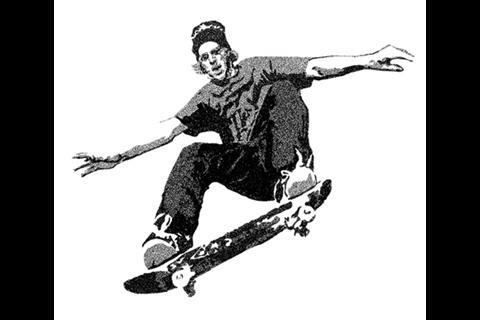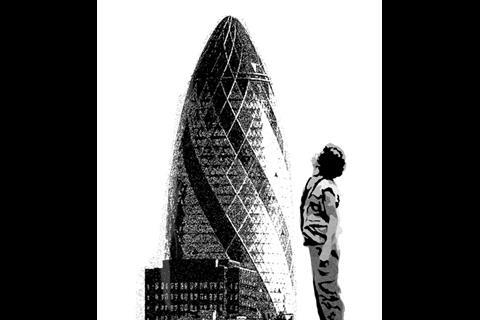Not many industries offer the chance to plan the world’s greatest sporting extravaganzas, help to rebuild regions ravaged by natural disasters or live with penguins. Here’s one that does.
... I’d never have lived in Antarctica
Gemma Clarke, engineer, Faber Maunsell
Halley is just one of a number of British Antarctic Survey bases, but it’s the most remote - it’s on an ice sheet, a floating glacier flowing out to sea, and every 50 years a large chunk of the sheet breaks off. They’d predicted that sometime in the next five to 10 years it would happen again – and the old Halley 5 base was on the wrong side of the divide. When I started at Faber Maunsell in 2004, after finishing my civil engineering degree, I joined a team who were on the final shortlist of six to design the new base, Halley 6. In the summer of 2005, we won the competition, which was when I got the chance to go down to work on the existing base.
The trip was four months long in total - a month sailing down there, two months working and then a month sailing back. I flew to Uruguay, and then you work on the ship restocking the bases as you travel down. I saw large penguin colonies on the islands we passed on the way.
I never dreamed I’d get to go there, it’s so different to anything else you’ve seen. You stand on the base and it’s flat and white in all directions as far as you can see. When I was there, it was the Antarctic summer so it was 24 hour daylight, and about the temperature of a ski resort - -2 or -3°C. By the time I left in February though it was -20°C, although inside the base it felt like a normal building. The rooms of the base have got blackout blinds and you try and carry on as normal. For the first week, you’re moving the cargo from the ship to the base in two twelve hour shifts.
It was very odd on Christmas Day, getting up in the morning and seeing the other shift just sitting down to their Christmas dinner. I did miss people but they’ve got amazing telephone and internet connections. There were about 50-60 other people there, working through the summer doing maintenance. One of the problems is that the snow doesn’t melt so the base has to be jacked up, so we worked on raising the cabooses to keep it above the new level.
You take it for granted when you’re surveying that you can use the equipment - but down there you’ve got big gloves on and seals running off with your tape measure!
... I’d never have helped with the reconstruction after the tsunami
Anthony Peter, senior engineer, Arup
I finished university about six years ago, but I wasn’t entirely sure I wanted to be an engineer so I joined a voluntary organisation and went to Ghana in West Africa for a year to build a school. That totally convinced me, so when I came back I got a job with Arup, one of the largest engineers in the UK.
Part of the reason I chose Arup was because it supports engineering aid agency Red-R. Three years ago, I signed up with Irish agency GOAL through Red-R. When the tsumani struck on Boxing Day 2005 GOAL did a rapid response. I was really keen to go, but I had to get agreement from my boss. Work were really cool about it. I had three working days to tie up loose ends, then I was on the plane to Sri Lanka.
I got there 10 days after the tsunami and it was chaos. Nobody knew what was going on. Everybody was trying their best but it was almost impossible to gauge what was happening. We drove for 200km, and all the villages and buildings along the way were completely destroyed.
I spent two months working on a temporary shelter programme. We needed to build 2,000 to take people from tents before the permanent housing was built. You adapt very quickly when you’re working in that environment. The local guys were fantastic – a lot of the engineers they employed to work with us were Sri Lankan and it was really good to be working for a common goal. I’m still in contact with some of them.
The next four months I spent upgrading their water supply and infrastructure, building back better than what was there before. You don’t appreciate what you learn at uni, but then you’re in a country where the infrastructure isn’t up to first world standard and you start to appreciate it.
By chance, my company is working on a project in Sri Lanka so I’m hoping to go back. It’ll be a good chance to catch up with the people I worked with.
... I’d never have built my own skatepark
Matt Elms, project manager, Mace
I’ve been skateboarding since I was 14 and I used to go down the Cantelowes skatepark in Camden, north London, when I was younger. It’s been there for 20 years. There’s a lot of history but even though people really liked it, in terms of design it was rubbish and the concrete had started to crack. My mate has organised parties at Cantelowes for the past five or so years, so when Camden decided to redevelop the site, they asked if he knew anyone who could help.
Within the group who skated there, there were already people who had experience of design, building and engineering we could use – we didn’t want Camden to employ someone to tell us what to do. I’d never built or designed one before, but I’d been skating for 20 years and building for 10. I had also done a dissertation on building a dry ski slope during my degree in building management and European studies (a result of spending too much time snowboarding during my third year in Grenoble) .
We all volunteered because we knew we’d got the skills and we wanted a really good skatepark to replace the one we’d got. There’s a lot of excitement about this in the skateboarding world. All of us – the skaters, the council, the contractors – wanted to build the best skatepark in England.
The launch party earlier this month couldn’t have gone any better. Everyone really enjoyed the skatepark and the music and there was a real family atmosphere. It was brilliant.
... I’d never have been there when London won the Olympic bid
Gary France, group board director, Mace
On 6 July 2005, I was in Singapore for the announcement that London had won the right to hold the 2012 Olympics. Throughout the presentations, the tension was enormous, unbearable. Then we went to a restaurant for dinner to listen to the result. As it was announced, there were 250 people in the restaurant hanging on every word. The place just erupted, people were hugging each other, it was euphoric, just unbelievable.
And the reason I was there was because I worked in construction – albeit by accident. I left school at 16 with very few qualifications, just a handful of O-levels, as they were then. I wanted to be a designer but I clearly couldn’t be, so I did the next best thing and became a draughtsman - I’d enjoyed technical drawing at school. I applied for 13 jobs and was offered 12 of them. For some reason I chose contractor Laing and ended up in their tender planning department.
I worked my way up and became a junior planner for projects, working out what order things should happen in what timescale. I worked for a number of different companies and the projects got bigger and bigger. Lots of people who do what I do go into project management but I decided not to because I really enjoyed what I did.
When Mace was set up in 1990, I joined as the only planner. We were part of the consortium that won the competition to masterplan the Olympic park for the London bid. As our bid began to be taken more seriously, I was asked to work out how to build the Olympic park in Stratford. My job was to help convince the International Olympic Committee that London could do it in the time so I produced a very big book in simple layman’s terms with lots of drawings.
Which is why I was in Singapore to hear the result of the bid. Being a Londoner, having worked on the bid, being in construction and loving sport it was amazing to be a part of that - unforgettable.
... I’d never have breathed the air from the top of the Gherkin
Paul Scott, Make architects
The reason I became an architect was because I was interested in making and building things and seeing how they came together in a beautiful and elegant way. So to stand at the top of the structure when it’s in its raw state, before it's got the glass and environmental buffer on it is a very amazing thing to do because it's a very temporary state for a building. It's like being at the top of a mountain, being high above everything. And with the Swiss Re building the views are great – you can see right down to the mouth of the Thames.
But what was really interesting was that you're in an urban landscape rather than in the countryside, and you can see people and streets and buildings. You know it's a time and an experience that very few people will have. It'll never be repeated, it's a moment in time rather than something you can go back to.
You get to a stage when the glass goes on and it becomes quite sanitised. Having been involved from the beginning in the team that created that structure, to stand at the top of it was very special.
I had worked on a number of tall buildings before, but the thing with the Swiss Re building is that you can get right to the top of the building. It's a unique experience because usually there's a column or a staircase that interrupts the view – here there was nothing between you and the sky.
Topics
Careers guide April 2007
- 1
- 2
- 3
- 4
 Currently reading
Currently readingIf I didn’t work in construction ...
- 5
- 6
- 7






































No comments yet